Welcome guest, is this your first visit? Create Account now to join.
Welcome to the NZ Hunting and Shooting Forums.
Search Forums
User Tag List
+ Reply to Thread
Results 406 to 420 of 651
Hybrid View
-
10-10-2021, 09:41 PM #1Member

- Join Date
- Mar 2018
- Location
- Fielding-ish
- Posts
- 572
-
11-10-2021, 04:23 PM #2
-
01-11-2021, 09:20 PM #3sneakywaza I got

- Join Date
- May 2013
- Location
- Fairlie
- Posts
- 3,650
I've got traction control and engine tuning for one of these, left over from my racing days, if you really want to ask it the question.... while it's in bits, there is some stuff you need to do to solve/mitigate some of the problems they have, especially if you have track days in mind.
-
02-11-2021, 09:49 AM #4
-
02-11-2021, 10:20 AM #5Member

- Join Date
- Aug 2017
- Location
- King Country
- Posts
- 2,465
-
02-11-2021, 08:53 PM #6sneakywaza I got

- Join Date
- May 2013
- Location
- Fairlie
- Posts
- 3,650
The 675 Daytona is really short on top end, so it has to be ridden to it's strengths: torque that gets it out of the slow corners, GP level steering and stonking brakes that make it possible to pass the only place it can against the R6. But..... it has problems that get exposed when you become genuinely fast on one.
You need to:
1 - fit a Triumph Rocket 3 oil pressure relief valve.
2 - fit a race sump gasket.
3 - dump the stock rear spring and fit an Ohlins, a 10 if you are between 75 and 85 kg.
4 - raise the triple clamps until flush with the top of the forks.
5 - remove the bumpstops at the bottom of the forks.
6 - change the front and rear sprockets for 15/45 you will be 16/47 at the mo, 520 is best, means the chain as well.
7 - fit tank grips for your knees to carry your body weight allowing your hands and arms to steer not brace on the bars.
The trail numbers on your model 675 are extreme and dangerous in the hands of the inexperienced at genuine fast corner entry. Raising the triple clamps and changing the rear sprockets alters the trail and lengthens the wheelbase, this massively improves mid corner stability and exit ( at the cost of just a little turn in) , removal of the bumpstops allows for much improved trail braking ( the front end valving and springs are good enough until you start running at the front, but the bumpstops are stealing 17mm of useful travel. The sprocket and chain change also allows you to spin the engine up faster and get out using the torque to drive. The re springing of the rear shock gets you compliance from the rear you will not currently have, wheel spin and instability are what the stock spring give you ( unless you weigh a 100kg )
Under hard braking ( not what a road rider thinks is hard braking though) the sump design has all the oil bugger off to the front and it can't be picked up meaning the engine can be scavenging frequently under hard use of the brakes.
I could go on for a bit, but I'll stop there for now.
I'll leave you with a pic of a multiple title winning Daytona.
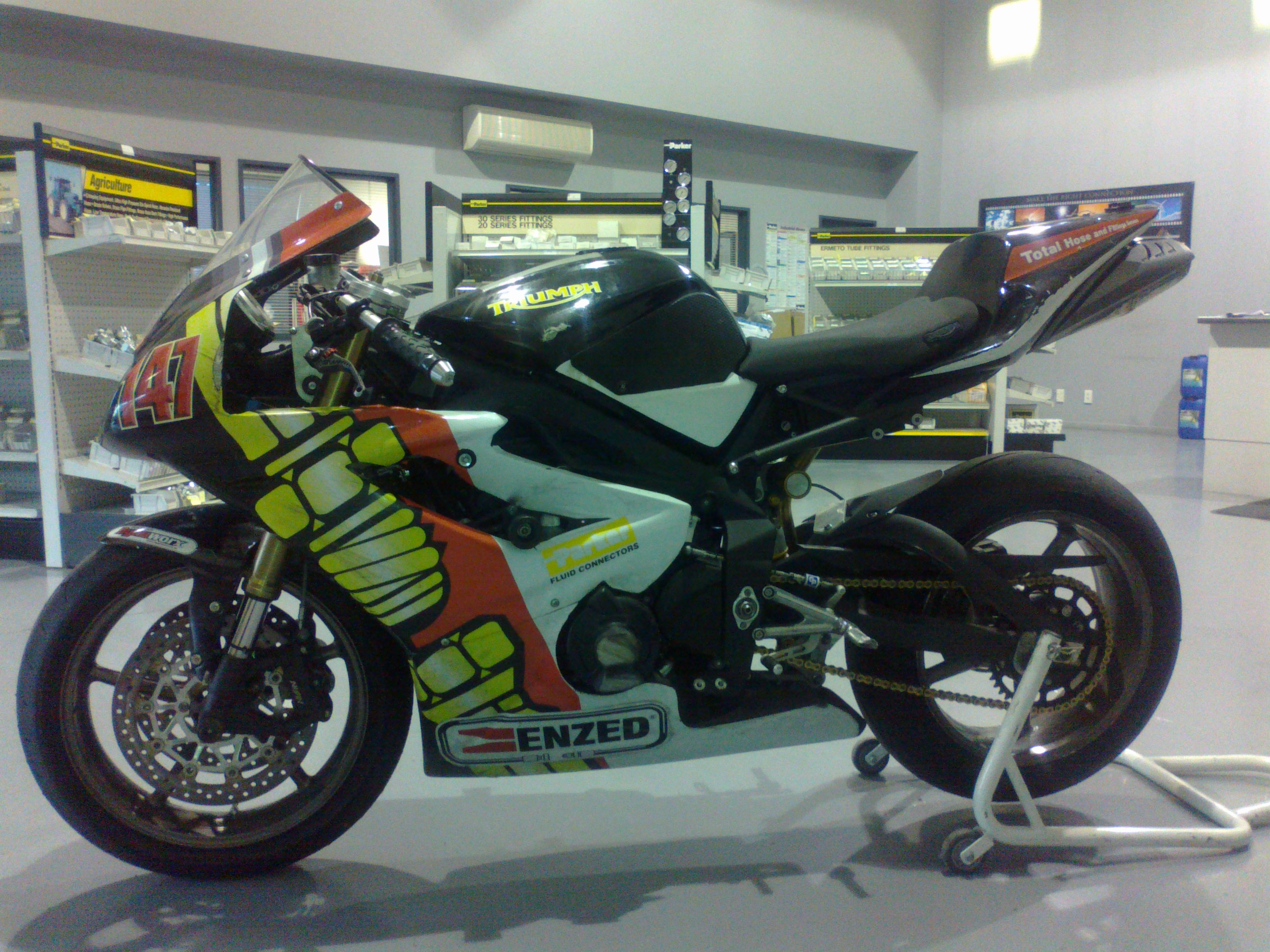
-
01-11-2021, 08:45 PM #7Member

- Join Date
- Jul 2020
- Location
- Central North Island
- Posts
- 5,473
For those of you on trail bikes, I cannot recommend the Tubliss system highly enough. Especially on the back end.
For competitive riders, Mousses are most probably better, but for heading bush on a two wheeler you cannot beat the added traction the Tubliss setup offers.
The photos below are of my Michelin S12 with 90 hours on it...mostly ridden at 5psi Occasionally zero psi, and sometimes at 10psi if on an organised trail ride with gravel road sections.
Occasionally zero psi, and sometimes at 10psi if on an organised trail ride with gravel road sections.
Once you get the hang of fitting (and maintaining!!!) the setup they are pretty bulletproof. And a puncture takes mere minutes to sort and you are off again. Not like getting a puncture in a tube
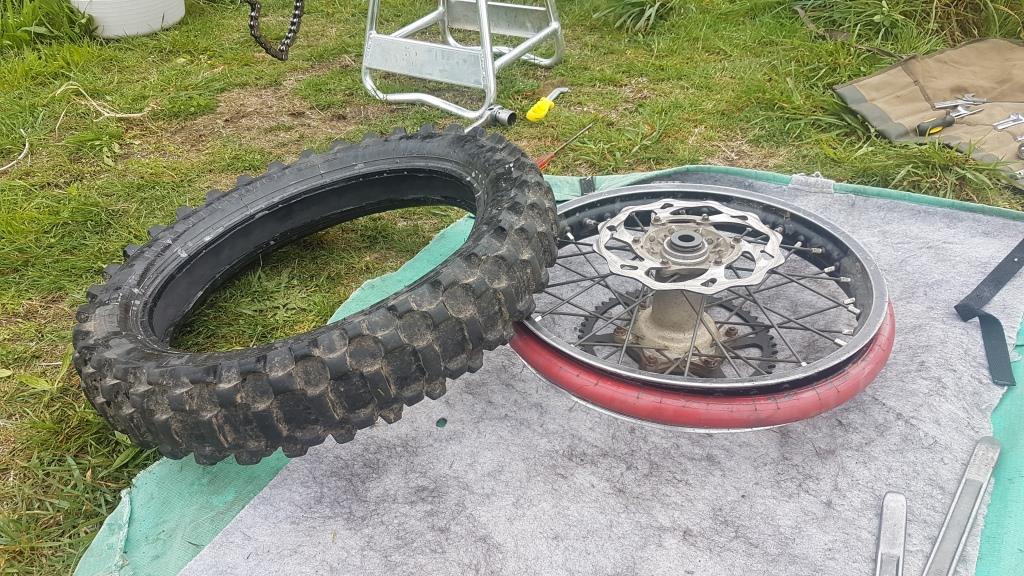
While there was still some rubber left, a nice new nobbly with sharp edges gets up up the steep stuff with a whole lot less drama
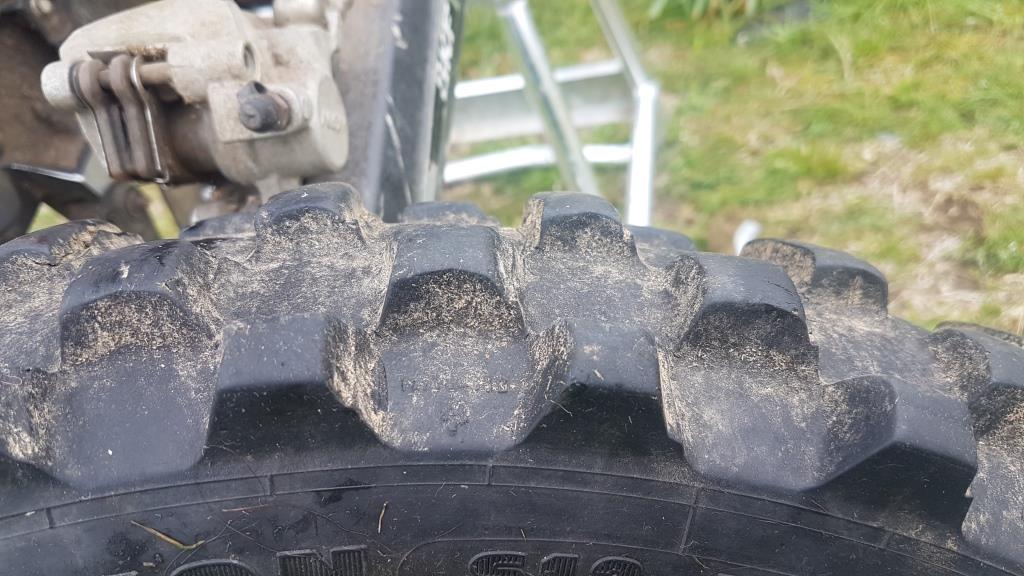
An added bonus of having a tyre last so long, is when you eventually swap it for a new one, you have mastered the bike with poor traction for so long you look like a pro when the new tyre 'gives you wings'
-
04-11-2021, 07:09 PM #8Member

- Join Date
- May 2020
- Location
- Gore
- Posts
- 170
-
04-11-2021, 07:15 PM #9Member

- Join Date
- May 2020
- Location
- Gore
- Posts
- 170
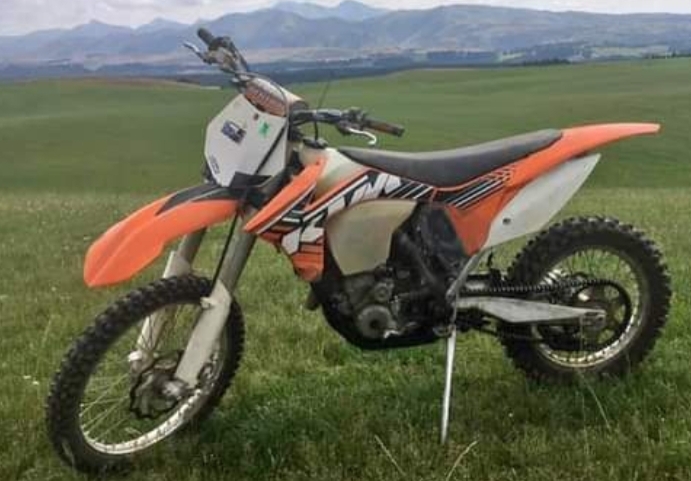
2012 KTM xcf 250 wicked bike coming from a crf230 for years
-
04-11-2021, 08:47 PM #10Member

- Join Date
- Aug 2019
- Location
- South Otago
- Posts
- 4,018
No pics but Mrs Finnwolf and I went for a ride on our Royal Enfields, with the weather being the way it was it would have been mad not to eh?
Only thing better would have been hunting…‘Many of my bullets have died in vain’
-
10-11-2021, 07:15 AM #11Member

- Join Date
- Jul 2020
- Location
- Central North Island
- Posts
- 5,473
Rode the Haast several times on the old XR500 before it was sealed. Boy what a blast! Big sweeping corners on the eastern side. Tapped out pretty much as fast as she would go. Lovely hard packed gravel with bugger all potholes. heaven

-
10-11-2021, 10:57 AM #12Member

- Join Date
- Aug 2017
- Location
- King Country
- Posts
- 2,465
-
10-11-2021, 11:47 AM #13Member

- Join Date
- Aug 2019
- Location
- South Otago
- Posts
- 4,018
-
10-11-2021, 01:49 PM #14Member

- Join Date
- Jul 2020
- Location
- Central North Island
- Posts
- 5,473
-
10-11-2021, 10:19 PM #15
Similar Threads
-
Shooting Apps "Range Buddy" and "Reloading Assistant"
By Dead is better in forum Resource LibraryReplies: 4Last Post: 14-01-2017, 05:23 PM -
Evolve LED Light Bar For Offroading in sizes 18",20",28",36",43"
By pighuntingnz in forum Outdoor TransportReplies: 4Last Post: 27-12-2016, 08:05 AM -
"sausage making course" and "curing & smoking course"
By hotbarrels in forum Game Cooking and RecipesReplies: 3Last Post: 06-08-2016, 09:11 PM -
Show off your 2nd hand "fck yeah" buys
By Philipo in forum Firearms, Optics and AccessoriesReplies: 9Last Post: 27-04-2014, 11:04 PM
Tags for this Thread
Welcome to NZ Hunting and Shooting Forums! We see you're new here, or arn't logged in. Create an account, and Login for full access including our FREE BUY and SELL section Register NOW!!





 1877Likes
1877Likes LinkBack URL
LinkBack URL About LinkBacks
About LinkBacks




 Reply With Quote
Reply With Quote

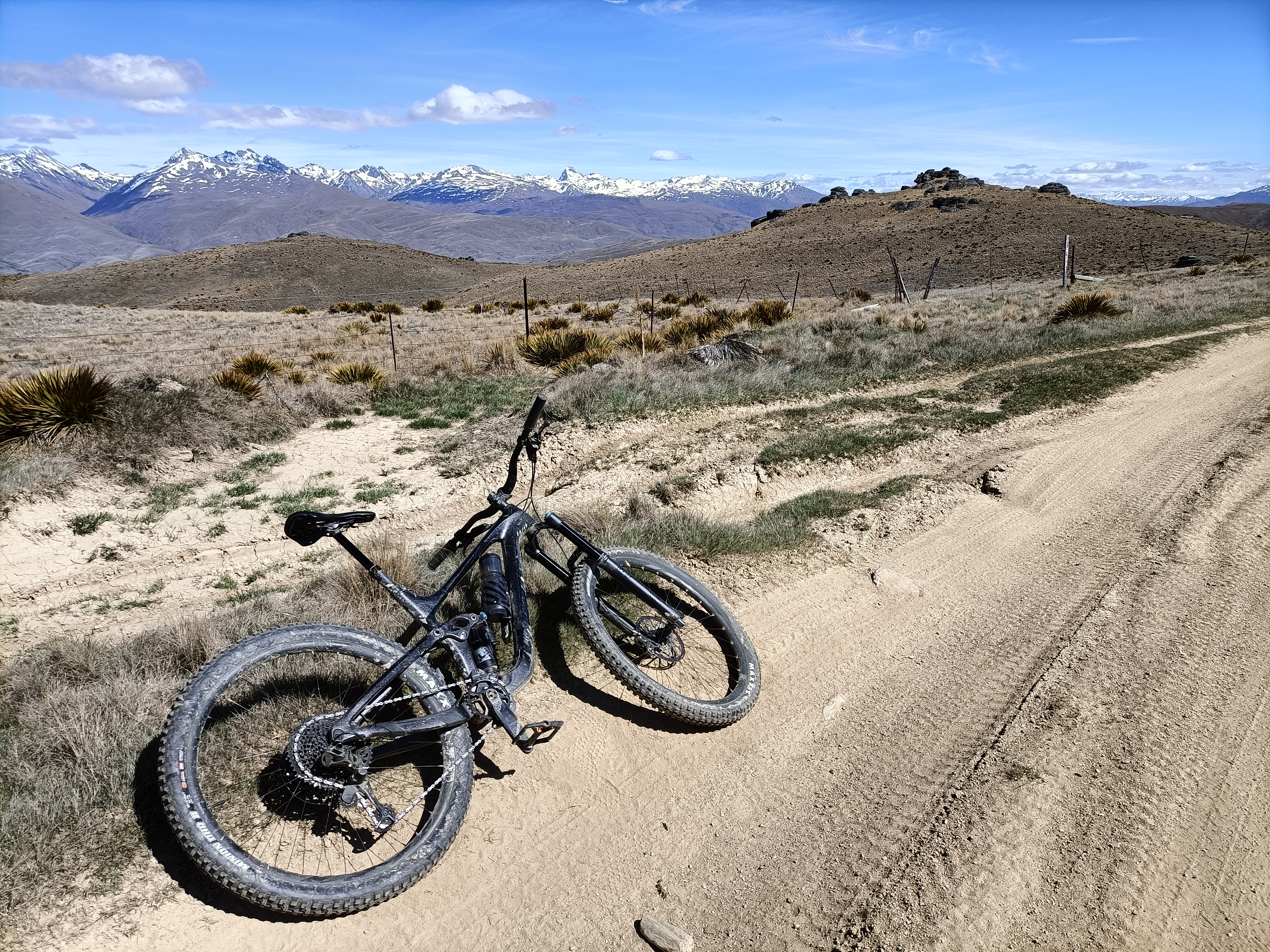
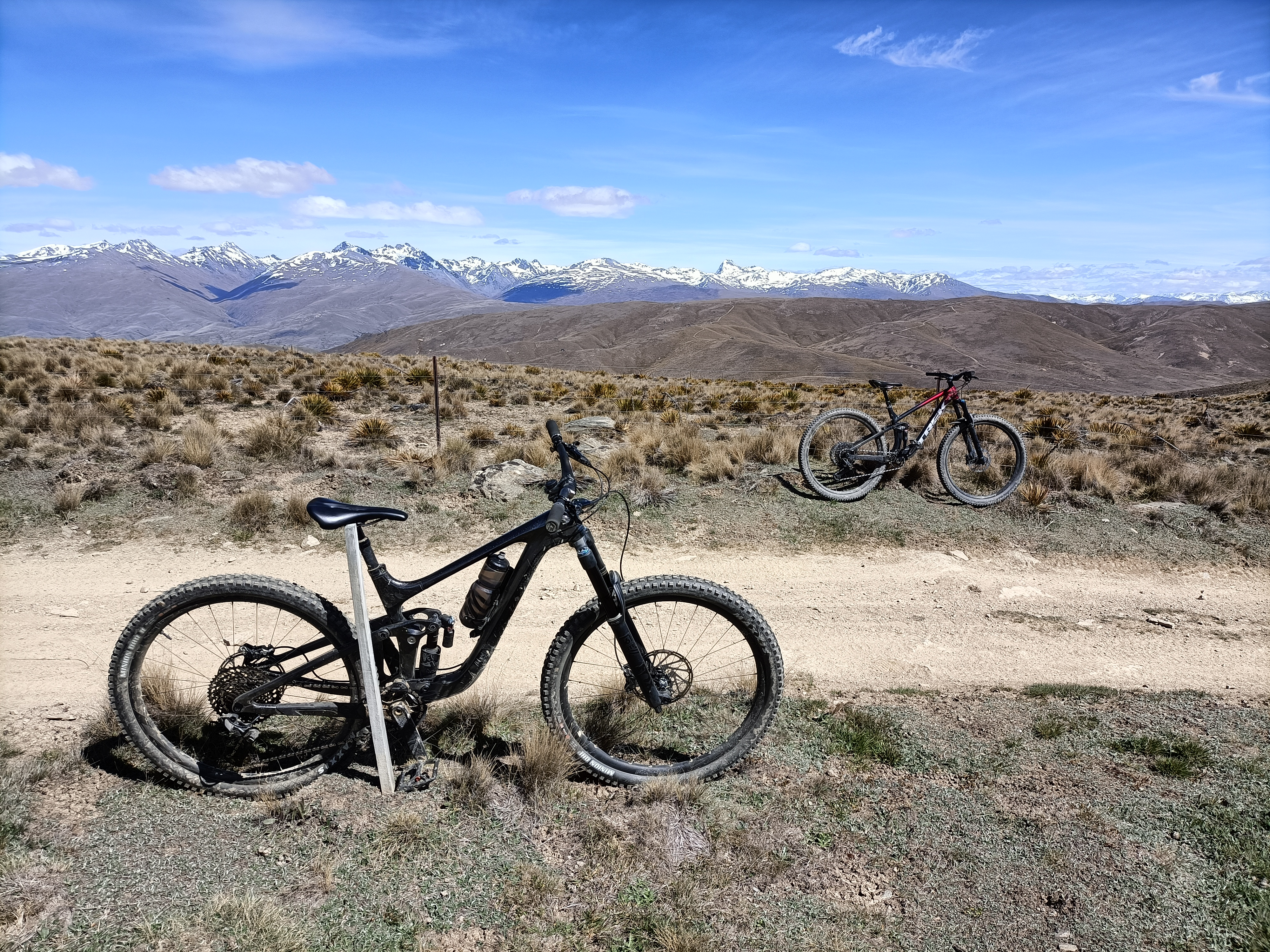



Bookmarks